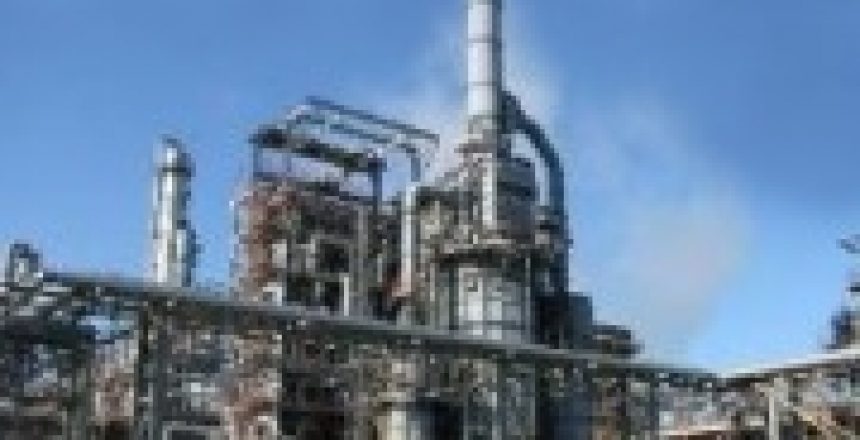Styrene is a clear organic liquid hydrocarbon that is produced mainly from petroleum products after a process of fractional distillation to extract the olefins and aromatics necessary for the chemical materials to produce Styrene. Most petrochemical chemical plants are similar to the picture on the right. Notice the large vertical column which is called the fractional distillation column. This is where the components of the petroleum are heated to high temperatures because each of the main chemical components have different boiling points thus separating them very accurately.
Styrene is what’s known in chemistry circles as a monomer. The reaction of monomers forming “chains” and the ability to link up with other molecules are essential in the production of Polystyrene. Styrene molecules also contain a vinyl group (ethenyl) that share electrons in a reaction known as covalent bonding, this allows it to be manufactured into plastics. Frequently, Styrene is produced in a two step process. First, the alkylation of benzene (an unsaturated hydrocarbon) with ethylene to produce ethylbenzene. Aluminum chloride catalyzed alkylation is still used in many EB (ethylbenzene) plants around the world. Once that is done, the EB is put through a very precise dehydrogenation process by passing EB and steam over a catalyst like iron oxide, aluminium chloride, or lately, a fixed-bed zeolite catalyst system to get a very pure form of Styrene. Nearly all ethylbenzene that is produced around the world is used for styrene manufacturing. Recent advances in Styrene production have increased the ways in which Styrene can be produced. One way in particular uses Toluene and Methanol instead of EB. Being able to use different feedstocks makes Styrene a competitively affordable resource.
Petroleum Refining – Short and Sweet
- The crude oil is heated and turned into a vapour.
- The hot vapour rises up the fractionating column.
- The column is hot at the bottom and gets cooler towards the top.
- As each hydrocarbon vapour rises and cools to its boiling point it condenses and forms a liquid.
- The liquid fractions (groups of hydrocarbons with similar boiling points) are trapped in trays and are piped off.
Other interesting ways in which we can obtain the Styrene monomer is through the use of LPG and NGL. According to the U.S. Energy Information Administration about 191 million barrels of LPG and NGL were also used in the United States to make plastic products in the plastic materials and resins industry, as well as 412 billion cubic feet (Bcf) of natural gas was used to make plastic materials and resins in 2010 (current figures are almost non-existent). Having these alternate sources for Styrene production reduce an over-dependence on oil imports.
When it comes to plastics, Styrene is one of the most versatile monomers around. The list below clearly shows how the importance Styrene is measured by how many types of polymers can be manufactured from it.
Styrene is also an essential monomer in these Polymers:
- Polystyrene
- EPS (Expandable Polystyrene)
- SAN (Styrene Acrylonitrile Resins)
- SB Latex
- ABS (Acrylonitrile Butadiene Styrene Resins)
- SB Rubber (Styrene-butadiene since 1940’s)
- Thermoplastic Elastomers (thermoplastic rubbers)
- MBS (Methacrylate Butadiene Styrene Resins)

